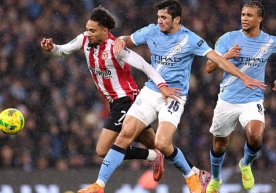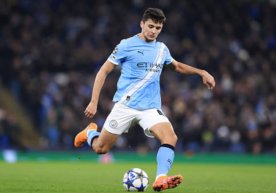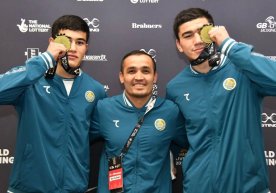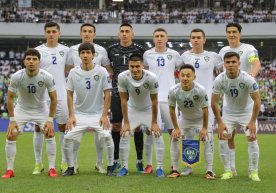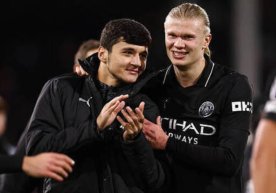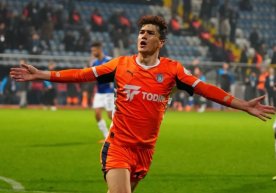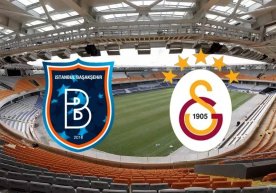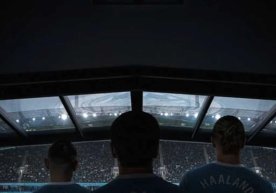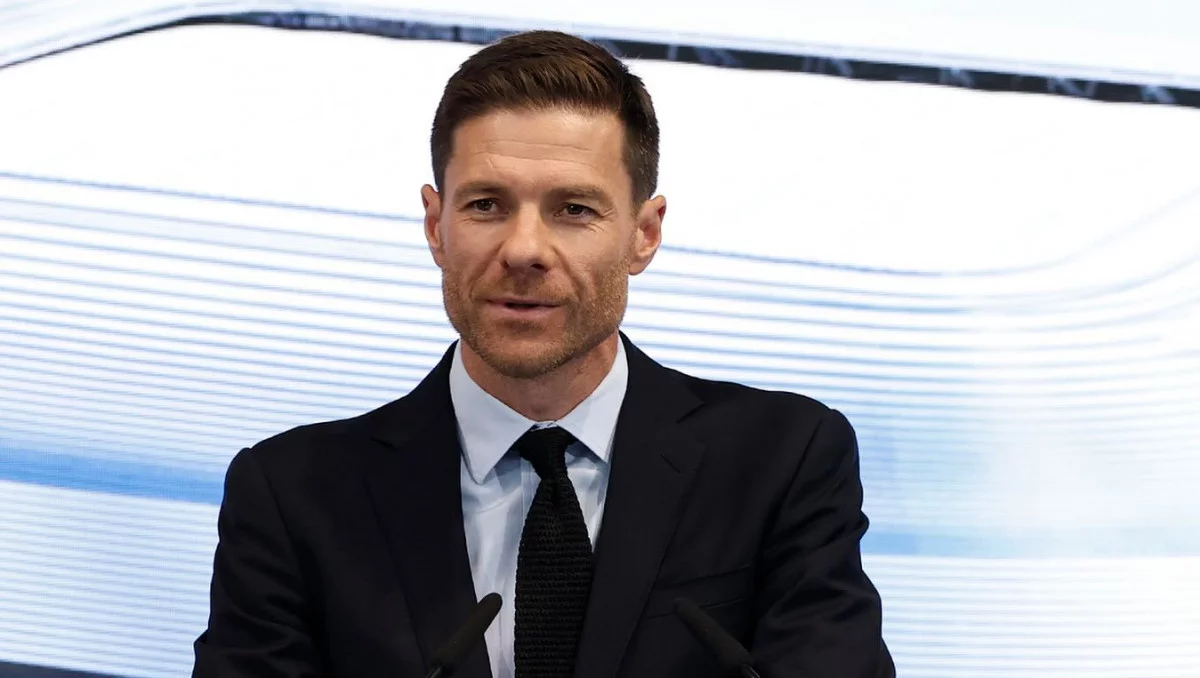
Will the club bring the necessary players for the new coach? Will the coach continue to apply the methods he used at Leverkusen in Madrid?
Real Madrid officially announced an agreement with Xabi Alonso. The Spanish coach will manage the team until 2028 and will officially start his job at the Club World Cup, which begins in June.
Quotes:
“…I’ve come back home. My bond with this club has never been broken. When I returned to Valdebebas, the feelings came alive again.”
“…I did not come here with my own demands. I came to work together, as a team.”
“…I want people to look at our game and say: this is a real team, and I want them to rush to the stadium in hopes of enjoying it.” (Xabi Alonso)
“When you were coaching the Real Madrid youth team back in 2018, we already knew where you belonged. Right here. This is your destiny.” (Florentino Pérez)
An inevitable event
Xabi Alonso's reunion with Real Madrid always seemed like a matter of time – and so it happened. His shared past with the club naturally brought both sides closer. Alonso had reportedly included in his contracts that if an offer came from clubs he had played for, it should be met with understanding. Pérez’s words confirm that.
Pérez referred to the 2018/19 season, and we can say that in the six years since, both Real and Alonso made the necessary steps for this meeting. After leaving Madrid, Alonso spent three years coaching Real Sociedad’s youth team, and in the middle of the 2022 season, he took over a struggling Bayer Leverkusen. In a short time, he turned the team into title contenders and then into Bundesliga champions. That championship made the top clubs talk about Alonso: Liverpool, Bayern, Real, and others lined up to hire him. These were the steps Alonso took toward Real – because in football, if you're one of the best, Real Madrid is waiting.
You could say Alonso was like the loaded gun hanging on the wall in a Chekhov story: all that was left was for it to fire – for the coach to appear in Madrid.
Real, for its part, had grown tired of fighting against systemic football. While other top clubs were building various tactics and systems, Real kept succeeding with a simpler approach – and it worked. This uniqueness also added extra charm to Madrid. But in the last season, it became clear that this method doesn’t always bring results. Real had always relied on individual brilliance and combinations like Kroos – Modrić or Vinicius – Mbappé. But with each passing year, replacing those who left became harder. Modrić, Kroos, Benzema – each was unique, and losing them naturally tore something out of the team’s style. Constantly searching for replacements and trying to cover those holes with new stars was expensive – and didn’t always work. Florentino Pérez started feeling the need for a team that would work like a clock and require only minor adjustments over the years.
Alonso is the ideal candidate for this. Known for his system and style, he’s already delivered results. Moreover, his personality fits perfectly – he’s a fan favorite, has great experience as a player, and has played with almost every star, meaning he knows how to speak with the new generation of stars.
Also important, especially in the first season, is his flexibility. As a player, he played under both pragmatic José Mourinho and tactician Pep Guardiola, getting the education he needed.
3-4-3 – the new Real?
Lately, even some serious publications have started voicing concerns related to Alonso’s tactical scheme. He is a young coach with only two years of top-level experience at Bayer, and all his success was achieved with a 3-4-3 formation. For Real Madrid players, who are not used to rigid tactical patterns, a difficult adaptation period may be ahead. Especially after Rúben Amorim’s issues at Man United, where a switch from four to three defenders turned painful.
Let’s analyze Real’s squad and the potential issues that may arise if Alonso sticks to his preferred system:
Central defenders: Real can easily find three. Players like Alaba and Rüdiger are even more suitable for a back-three, as they can push forward.
Wing players: Here’s the first big challenge. You need players who can contribute both in attack and defense. In this system, wingers must stretch the field, not cut inside like Camavinga or Valverde. Using them the same way becomes harder.
Holding midfield: You need players who fight for the ball and have a good passing range. Real is the most complete here – with Ceballos, Valverde, Bellingham, Camavinga, and Tchouaméni.
Attacking midfielders: In Bayer’s system, two “number 10s” play behind the striker. Wirtz was perfect for this. He was fast, great in dribbling, passed well, and controlled the game. In Real, Vinicius, Rodrygo, or Brahim don’t fully fit this profile. They might play differently, but for the second “10” a new player is needed. Only Arda Güler could be shaped into this role – but we didn’t get that answer this season.
Striker: Mbappé might be more effective than any striker in this system. But there’s one key point. The striker must always appear in the box at the right time and be ready to finish. Dropping back isn’t necessary. If Alonso’s system can create 3–4 chances per game for Mbappé, and he consistently scores, he might accept that role, even without flashy goals or dribbles. Like Ronaldo, who lost speed and became a finisher, or Haaland at City, who once touched the ball 9 times and scored 3 goals. If Mbappé agrees to just score – he could become a machine.
So, Real must be active on the transfer market: two wingers and at least one attacking midfielder are needed.
Alonso’s flexibility
Alonso is considered a flexible coach. His main success is said to be his ability to build a system around the players he has. In some big games (vs Bayern, Borussia, Inter), he even played with a back four. But his top-level successes are still tied to 3-4-3. Whether he can adapt to a different system — we don’t know yet.
Transfers
Another change with Alonso’s arrival is Real’s transfer strategy. Until now, Florentino Pérez bought whoever he wanted – players who added value to the Real brand or finances – and the coach had to make it work. That’s why even talented players like Camavinga or Tchouaméni didn’t get stable roles and were often filling gaps.
Most likely, Alonso won’t accept that. A young coach needs players that fit his system, and it’s natural he will ask for them. This was reportedly discussed during negotiations.
His first signing is Dean Huijsen. The 20-year-old Spanish center-back is one of the revelations of the Premier League. He’s excellent at ball control, vision, and long-range passing. He could become a central figure in Alonso’s build-up play.
The second transfer is for the defense again — Trent Alexander-Arnold. No introduction needed. After the Portuguese Cup final, Real also began talks with Benfica for Álvaro Carreras. The 22-year-old is a Madrid youth product who played for Castilla between 2017 and 2020 before joining Manchester.
Another player Real is considering is Angelo Stiller — a 24-year-old central midfielder. He has long been watched by top clubs and was one of the best in many metrics in the Bundesliga. Reports say Toni Kroos himself recommended him.
Real might also enter the race for Martín Zubimendi, who had nearly reached an agreement with Arsenal. Let’s not forget Alonso once promoted him from Sociedad’s youth to the main team.
As you can see, all these names are top-level passers and controllers. But physically — covering space, winning duels — might be an issue. Like how Kroos had Casemiro, or Bellingham had Valverde, these players will also need the right support. Alonso will likely rely heavily on hardworking players like Tchouaméni and Valverde.
Moreover, it’s known Alonso wants to bring back Nico Paz from loan at Como. Although the Italians want to extend the loan, Alonso sees him as a replacement for Luka Modrić. Wherever Alonso works, he focuses on youth and actively promotes them. That’s good news for Endrick and Güler, who haven’t had enough chances.
In his press conference, Alonso spoke about the future: Bellingham remains key, Vinicius and Mbappé can play together, and Rodrygo won’t leave.
Conclusion
Whatever is speculated about Real’s improvement or decline, one thing is certain: next season, the team will be different. Alonso’s preference for dynamic football, active pressing, and balanced ball control puts him in the same category as Flick or Slot. He didn’t come to Madrid to abandon his ideas, but to show them on a bigger stage, with bigger players.
This is great news for football. Who will win the Champions League now? What will happen in El Clásico? It’s hard to say. But one thing is clear — everything will be even more exciting. Read “Zamin” on Telegram!
Ctrl
Enter
Found a mistake?
Select the phrase and press Ctrl+Enter Related news
Information
Users of Меҳмон are not allowed to comment this publication.
Users of Меҳмон are not allowed to comment this publication.







